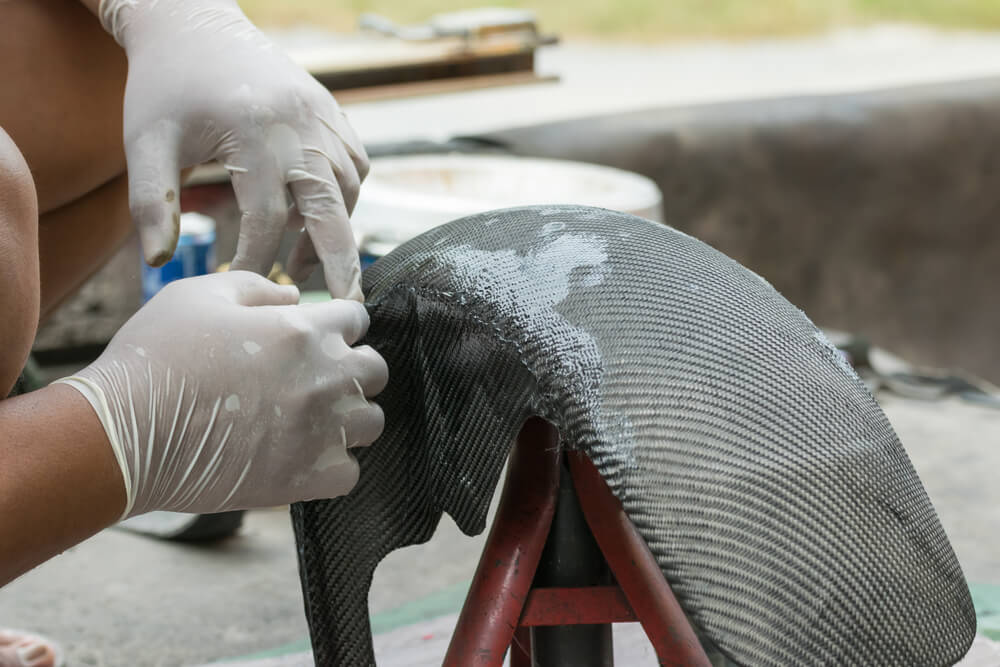Much of our consumption has become more motivated by trying to do as little harm to the environment as possible.
There are so many things to consider, but that we might often overlook in our lives, such as the tires on our cars and bikes to the cables and cords we have all around our home.
Many of these practical items we use everyday, as well as products used in some of the industries we work in, use a material called kevlar.
You may have heard of this substance, said to be way stronger than steel, but you might not know much about it and what its potential impacts on the environment are.
What Is Kevlar?
Kevlar was originally invented in the 1960s as a fiber that could be strong enough to construct durable tires.
These tires were to be built with material that was lightweight but wouldn’t be destroyed easily. The creator of kevlar was a chemist named Stephanie Kwolek.
Kevlar is not considered a widely used product compared to many other materials.
Because of this, it can be costly to purchase it in order to make it into products.
It is especially in high demand for protective equipment for law enforcement and those who might experience combat.
What Is Kevlar Used For?
Kevlar has numerous purposes, from commercial to scientific to household uses.
Kevlar can be found in many of the cords we use to connect our technology to an electrical outlet, as well as tires on multiple modes of transportation.
It is also sometimes used to construct musical instruments, equipment that is used for multiple sports, and in protective equipment such as bulletproof vests and helmets.
Is Kevlar Biodegradable?
Kevlar is not a biodegradable material.
Kevlar is actually an incredibly strong material that is nearly impossible to break apart. This is part of the reason it’s used in so much protective equipment.
Furthermore, kevlar is water resistant and it can be difficult to damage it, even at the surface level.
While this is great for the multiple purposes kevlar is used for, it’s not great when the kevlar is no longer of use and needs to be disposed of.
If kevlar were to be sent to a landfill, it would take approximately 200 days for it to start decomposing.
Is Kevlar Recyclable?
Since kevlar cannot be disposed of in the trash as it’ll just end up in a landfill, thankfully, it is recyclable.
Kevlar that is no longer of use in its current form can be deconstructed and repurposed into a whole array of other products.
It’s good to check local recycling capabilities before throwing your kevlar into your recycling bin.
There are specialized recycling facilities that are experts when it comes to making new things out of old kevlar.
Is The Production Of Kevlar Bad For The Environment?
In order to make kevlar, sulphuric acid has to be used.
This process is not good for the environment. Sulphuric acid is known to have devastating effects on wildlife and plant life in high amounts.
If the kevlar is produced in a safe manufacturing facility it is generally safe.
Kevlar, once it’s manufactured, can be considered sustainable as it’s able to be recycled.
Therefore, the kevlar itself is not bad for the environment, but creating kevlar can have a negative impact.
Are There Any Pros For Kevlar?
With kevlar being water resistant, flame retardant, and durable, it has a lot of beneficial uses and can withstand an immense amount of pressure.
This makes kevlar a safe and reliable option for use in dangerous occupations where people need protection they can depend on.
Protective gear made of kevlar is not only for dangerous jobs. It is also often used in protective equipment that can help prevent injury in other jobs where there is a moderate risk, such as construction, manufacturing, and welding.
Kevlar can also be recycled and repurposed into a variety of products, so long as it is recycled properly in a facility that knows how to work with old kevlar.
This makes kevlar in its finished form a sustainable resource, even if the components that go into making it are not.
Are There Any Cons For Kevlar?
While kevlar is used in various equipment and uniforms to protect people in different occupations, it is not the most comfortable material to wear.
It is quite heavy, and it doesn’t offer a lot of flexibility in movement.
It’s lack of flexibility also makes it difficult to use kevlar for multiple purposes where its strength and durability could be of much use.
That being said, there is a lot of effort being made to work around the stiffness and find new uses for it.
The fact that kevlar is not biodegradable and its production could potentially be hazardous to the environment if it’s not responsibly manufactured isn’t ideal either, as sustainable products that don’t harm the environment in any way are desperately needed.

